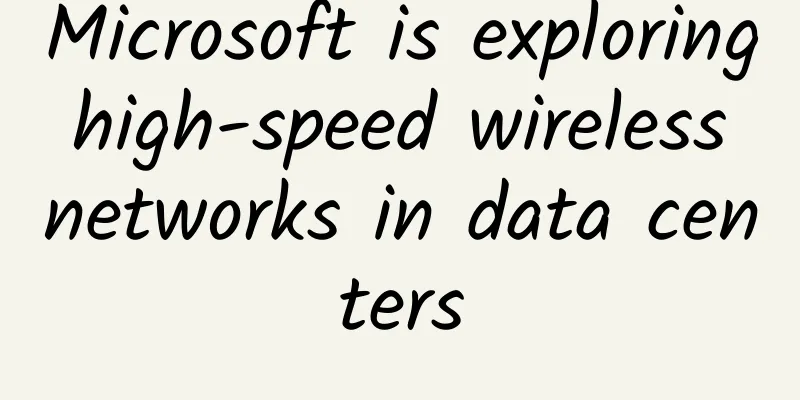In the tug-of-war between NetOps and SecOps, what role does SD-WAN play?

|
Connectivity across campus, branch, cloud, and edge is a fundamental requirement for building a digital enterprise, but as the network fabric expands, the need for end-to-end integrated security becomes more important. This, coupled with the necessity to continuously monitor and maintain application performance at campus, branch, and edge locations, creates a huge workload for NetOps and SecOps teams. The result is often a tug-of-war between two teams: one striving to keep the network optimized for performance and availability, and the other striving to keep data, applications, and devices secure.
Conflict or cooperation? The key to balancing NetOps and SecOps lies in how the network and all the connected devices are managed. Traditionally, in NetOps, there are separate consoles to configure, monitor, and analyze network domains. Similarly, in order for SecOps to capture, log, and analyze traffic in all the different domains, special taps are installed wherever traffic enters and leaves the domains. SecOps has the additional job of storing all traffic logs in the event of a breach or successful malware attack in order to pinpoint the cause and prove that appropriate measures were taken to remediate the breach and prevent future attacks. Can NetOps and SecOps collaborate instead of conflict? Digital transformation projects benefit from unified operations and security Deploying new multi-cloud applications requires ensuring the network is responsive, always available, and secure. NetOps needs to work with development teams to understand the network SLAs and cloud usage requirements for new applications. SecOps needs to ensure the correct network permissions, segmentation, and policies are applied to the network when applications are launched. NetSecOps collaboration is critical to timely deployment of next-generation applications with the security and performance levels required. SD-WAN can play an important role in the unification of NetSecOps by combining software-defined network architecture with single-console cloud management. SD-WAN Unified Network Cloud Management for NetSecOps The main benefit of SD-WAN for unified NetSecOps is the ability to provide a single role-based management portal for configuring and monitoring network performance, segmentation, and security policies. With the SD-WAN cloud controller, NetSecOps can:
Manage and secure east-west traffic and branch offices Because SD-WAN provides a host of integrated security layers, traffic entering and leaving the branch can be thoroughly inspected for application penetration, malware intrusions, and known bad URLs. But when malware is introduced by devices in the branch network remains a thorny issue. In the days of branch WANs and hub WANs, traffic from each device in the branch office would be backhauled to the corporate data center for inspection and verification before returning to the branch office. This has always been a troublesome situation for NetOps because the traffic load just for backhauling and inspection interferes with traffic that normally has to go to the data center for additional processing. With SD-WAN, firewalls and intrusion detection are integrated into the branch routers, so traffic within the branch is inspected as it traverses the local network, in addition to traffic to and from the branch. The result is that SecOps can maintain control over local traffic security, while NetOps can free up bandwidth for priority traffic in the data center, SaaS applications in the cloud, and traffic to other branches, all managed through an SD-WAN controller shared by both teams. Secure access to SaaS applications via direct Internet connections Employees are now increasingly dependent on applications hosted in SaaS cloud platforms, such as Office 365, which need to be routed via direct Internet access. With SD-WAN, NetSecOps can focus not only on fine-tuning application performance, but also on defensive measures to protect valuable corporate data traveling to and from branch sites over Internet connections. By onramps to SaaS and IaaS clouds using SD-WAN, the network selects the most efficient path to handle Azure, AWS, or Google Cloud workloads, while built-in security layers provide protection through DNS URL filtering, advanced malware protection, and application-aware firewalls. NetSecOps manages application performance and security through the SD-WAN cloud controller portal. Facilitating collaboration between NetOps and SecOps is key to network agility With SD-WAN's ability to manage operations and security through the same cloud portal, it is practical to create a NetSecOps team to facilitate collaboration and maximize the QoE and security of devices and applications. Combining these two key capabilities helps create an agile network that makes digital transformation projects possible. |
>>: Six steps to prepare for a 5G IoT future
Recommend
5G indoor coverage poses problems for office buildings and operators
It’s no secret that 5G cellular is coming, but mo...
CloudCone Black Friday Pre-heating: $16.79/year - dual core, 1G memory, 30G hard drive, 3TB/1Gbps, Los Angeles data center
Although Black Friday is still a while away, Clou...
[11.11] RackNerd: $11/year-1GB/12G SSD/2TB/San Jose/Seattle/Dallas and other data centers
RackNerd has launched this year's Double 11 p...
CMIVPS updated pricing, US/Hong Kong VPS monthly payment starts from US$6/annual payment 30% off
I have shared information about CMIVPS many times...
Application of 5G in epidemic prevention and control in medical system
At the beginning of 2020, the COVID-19 epidemic w...
RackNerd: AMD Ryzen series promotion starts at $18/year, Dallas/Seattle/New York and other data centers
RackNerd has once again released a promotional pa...
2018 Yunnan-Huawei Software Industry Summit was held on December 20
The 2018 Yunnan-Huawei Software Industry Summit w...
5G meets WiFi on a narrow road, walking hand in hand in a friendly way
Recently, both domestic and foreign operators hav...
Do you know the characteristics of 5G core network (5GC)?
[[333327]] 3GPP defines the 5G core network as a ...
Big data, 5G, and surgical robots are changing healthcare
The healthcare sector has also benefited from the...
5G leads the new infrastructure, and network construction is ahead - Analysis of my country's 5G network construction
2020 is a critical year for the large-scale const...
Geek Host: 20% off for all VPS monthly payment, 35% off for annual payment, top up 300 and get 50
Geek Host is a Chinese hosting company founded in...
Computer WiFi is sometimes disconnected and sometimes not? How to solve the problem of unstable computer WiFi
Some time ago, I bought a new computer at home, a...
Casbay: Malaysia/Singapore VPS monthly payment starts from $11.59, 100M unlimited traffic
The Casbay domain name has been registered since ...


![[11.11] HostYun offers 25% off, starting from 13 yuan/month, data centers in Hong Kong/US/Japan/Korea, etc.](/upload/images/67cabd0e5a454.webp)






